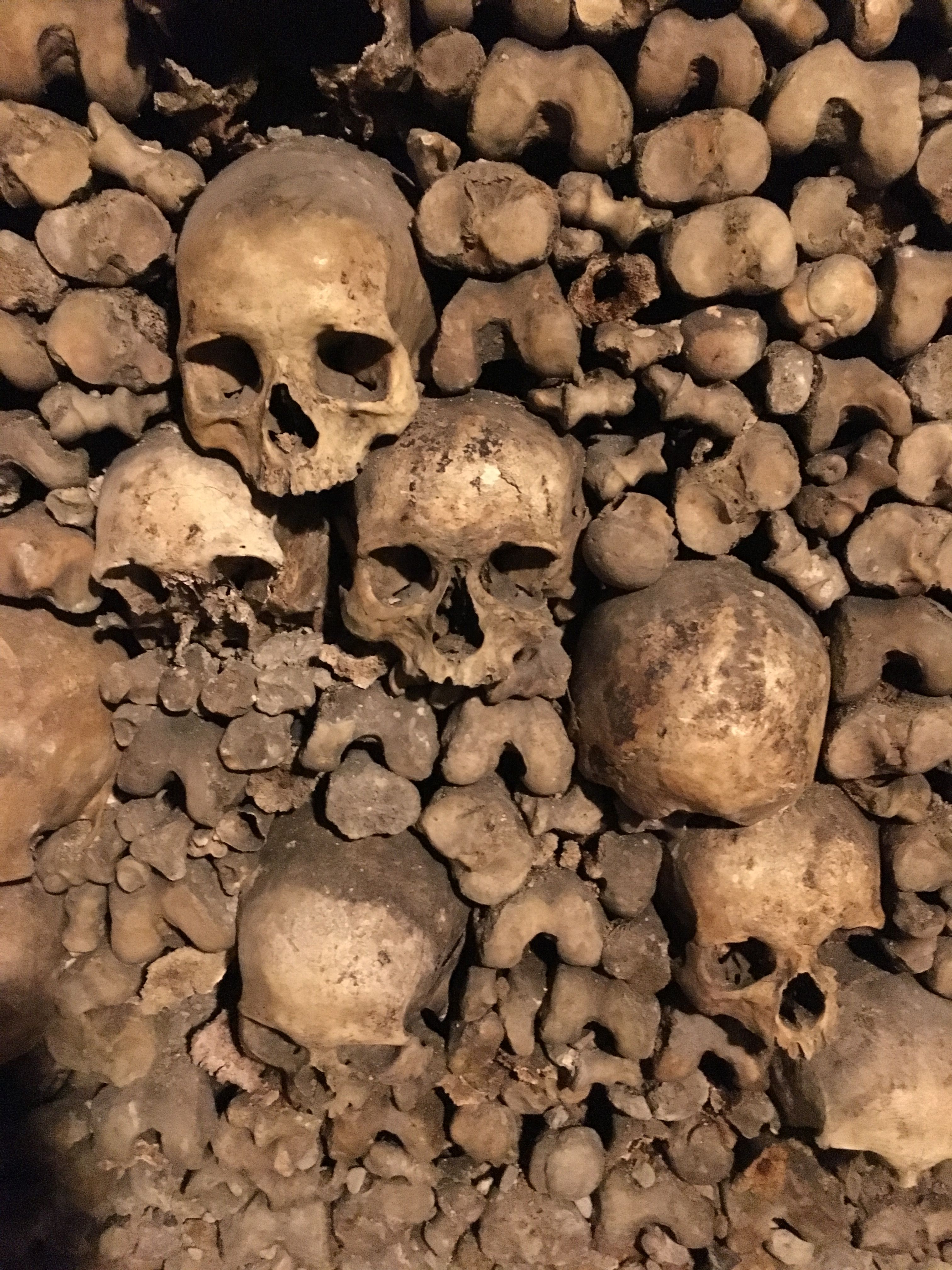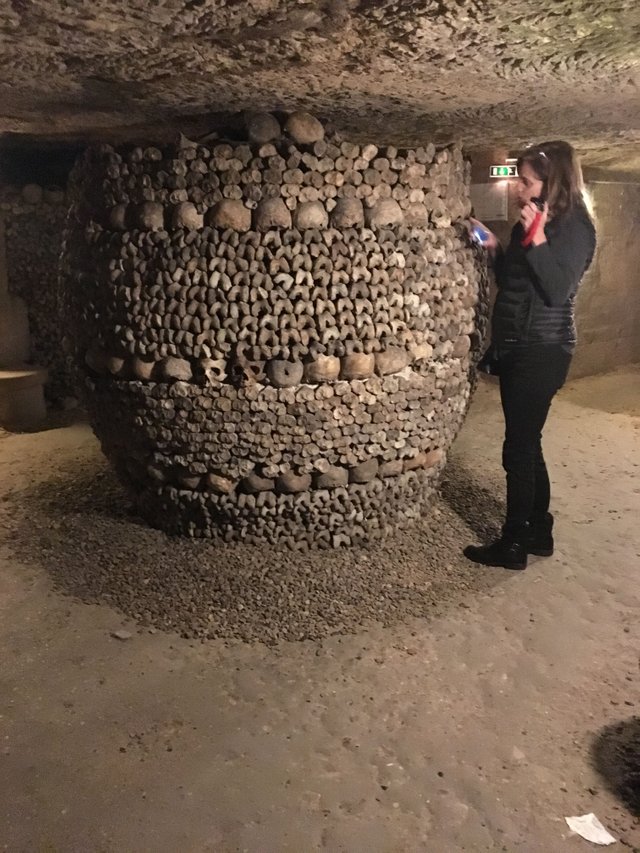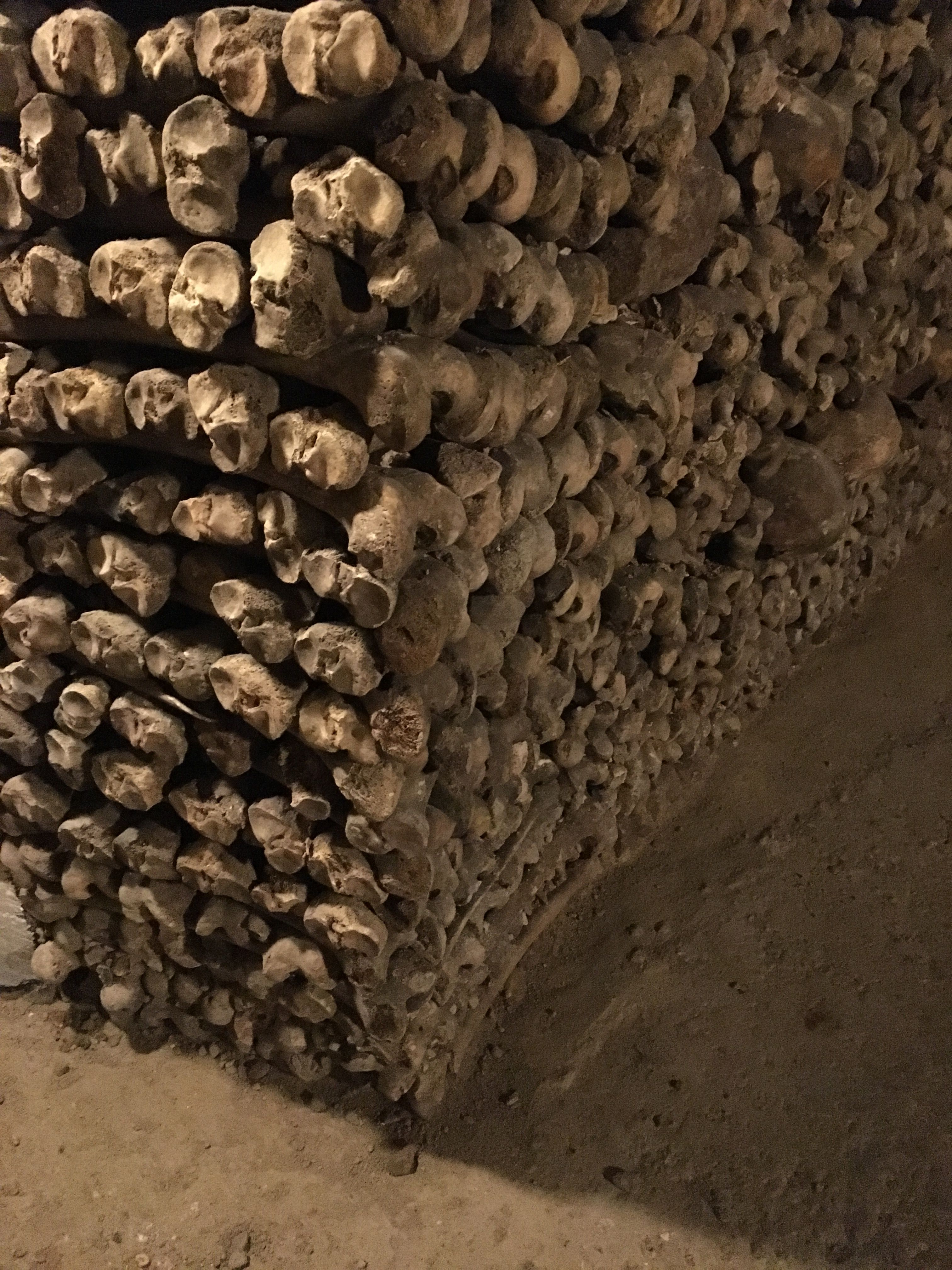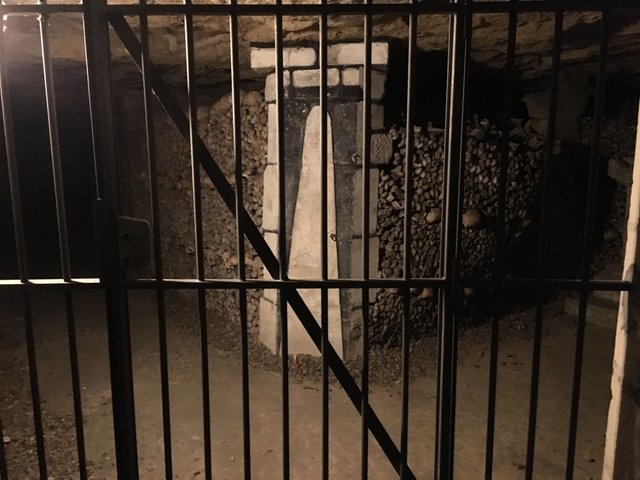Of course, you should visit the Eiffel Tower and the Arc de Triomphe while in Paris, but don’t miss the Catacombs. Get your ticket early and wear good shoes. It can be a bit mucky down there...

The Catacombs, which form a veritable labyrinth beneath the very heart of Paris, were created in the galleries of the former quarries whose stone was used to build the capital.
Situated twenty metres below ground, the ossuary contains the remains of millions of Parisians, transferred there gradually between the late eighteenth and mid-nineteenth centuries as graveyards were being closed because of the risk they posed to public health. The first of these was the cimetière des Innocents graveyard in 1786 in what is now the district of Les Halle.
In the long maze of dark galleries and narrow passages, visitors can see a tableau of death with bones arranged in a macabre display of high Romantic taste. The alexandrine verse "Arrête, c'est ici l'empire de la mort" [Halt, this is the realm of Death ] above the entrance to the ossuary is just one of an extensive series of maxims, poems and other sacred and profane passages giving pause for thought during the tour. This unusual site movingly brings the history of the Parisian people back to life and takes visitors on a timeless journey.

The Catacombs represent the interface between the history of Paris and the Earth's geological evolution. Forty-five million years ago, Paris and the surrounding area were covered by a tropical sea. Dozens of metres of sediment accumulated on the sea bed, forming over lime the limestone deposits visible in the Catacombs today. Geologists worldwide call this period in the history of the world the Lutetian period, alter Lutetia, the Gallo-Roman name for Paris.
As early as the first century AD, the Gallo-Romans were using this limestone to build Lutetia. From the thirteenth century onwards, the open quarries on the slopes along the river Bièvre were replaced by underground workings to supply the huge quantities of stone required to build Notre-Dame Cathedral, the Louvre and city ramparts. The supporting pillars, bellshaped roof cavities, quarrymen's footbath and Port-Mahon sculpture gallery, all of which can be seen on the tour, bear witness to the fact that mining activity was carried out at the site over the centuries.
The quarrying left empty areas used to create the eighteenth-century ossuary which became the Paris Catacombs.

The bones from several graveyards and churches in Paris undoubtedly include the remains of many famous names from previous centuries including, amongst others, the writers François Rabelais (between 1483 and 1494 -1553), Jean de La Fontaine (1621-1698) and Charles Perrault (1628 - 1703), the sculptor François Girardon (1628 - 1715), the painter Simon Vouet (I590 - 1649), the architects Salomon de Brosse (1571-1626), Claude Perrault (1613 - 1688) and also Jules Hardouin-Mansart (1646 - 1708).
During the Revolution, people were buried directly in the Catacombs, including members of the Swiss Guard killed in the storming of the Tuileries palace on 10 August 1792 and victims of the massacres in September 1792. The remains of victims of the guillotine transferred there from their original burial pits include Lavoisier (1743 - 1794), Madame Elisabeth (1764 - 1794), Camille and Lucile Desmoulins (1760 - 1794 and 1771 - 1794), Danton (1759 - 1795), and Robespierre (1758 - 1794).

Source of text: catacombes.paris.fr
Source of photos: klokalisi
Hi! I am a robot. I just upvoted you! I found similar content that readers might be interested in:
http://www.catacombes.paris.fr/en/catacombs/more-2000-years-history
Downvoting a post can decrease pending rewards and make it less visible. Common reasons:
Submit